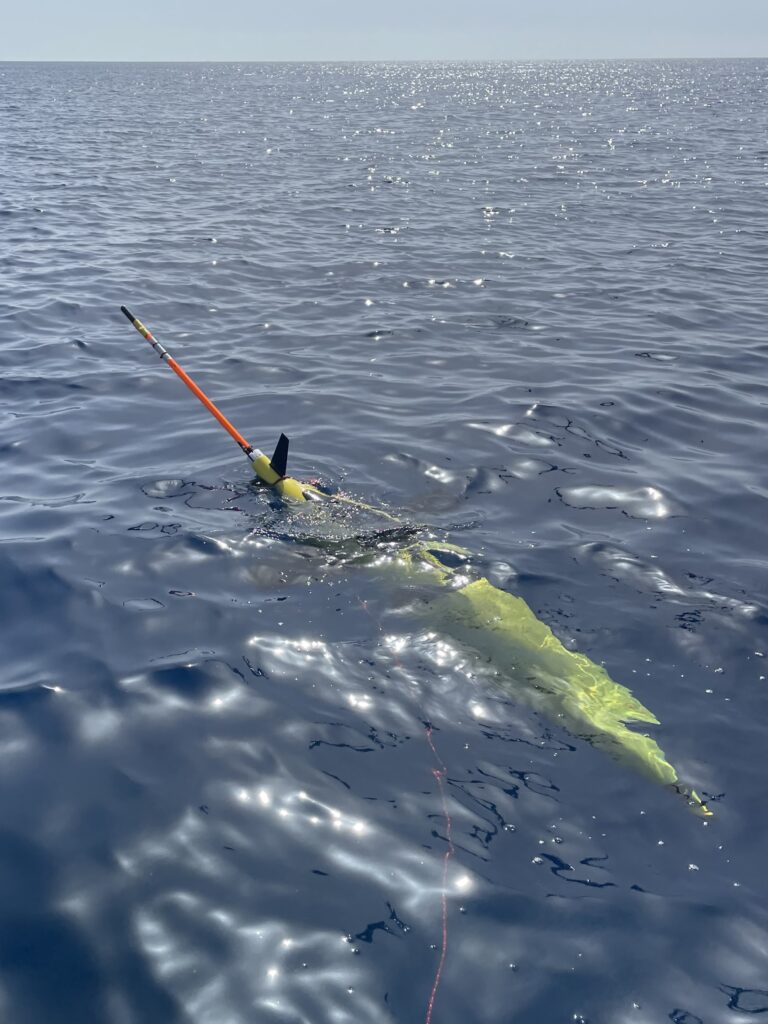“A low-CO2 smart autonomous multiplatform system to monitor and forecast Calanus finmarchicus stock – a new sustainable climate-neutral blue fish feed” Project is a four year long project funded by the Horizon Europe, Sustainable Blue Economy Partnership (SBEP).

Cyprus Subsea has partnered with Akvaplan-niva (APN) in Norway, the Atlantic International Research (AIR) Centre in Portugal, Institute of Oceanology of the Polish Academy of Sciences (IOPAN) in Poland, and Alfred Wegener Institute in Germany for this project.
The primary objective of this project is to develop methodologies to advance the Norwegian Sea Calanus fishery as a climate-neutral blue resource for the aquaculture industry. Project partners are harnessing the potential of cutting-edge, autonomous marine monitoring technologies coupled with remote sensing, artificial intelligence (AI), simulation modelling, and experimental investigations. Calanus is an attractive feed source since it contains important fatty acids of great importance to fish health in salmon farming.


Project Details
Following successful collaboration during the BIOGLIDER Project, CliN-BluFeed partners will continue to improve on the work initiated by that MARTERA ERA-NET funded project. In particular, project partners will utilize deep-diving Autonomous Underwater Vehicles (AUVs) and advance remote sensing detection by developing an image processing protocol to detect C. finmarchicus. Two Seagliders will be deployed in Norway for a scientific cruise. The project will enhance the operational capabilities of an M1 Seaglider equipped with the Kongsberg Simrad EK80, an active acoustic echosounder and the Hydroptic Underwater Vision Profiler (UVP).
Cyprus Subsea integrated the second Seaglider with an Anderaa oxygen optode, Sea-Bird Scientific ECO Puck fluorometer, and photosynthetically active radiation (PAR) sensor for physical oceanography. Partners will also test the operational capabilities of a Teledyne Marine Slocum G3 glider with UVP6. This system will improve the classification and quantification of zooplankton, specifically C. Finmarchicus through the glider-mounted optical and acoustic sensors. By improving the performance of these gliders, CliN-BluFeed partners will raise the Technology Readiness Level to TRL8 under operational conditions and extended deployments. This June, important data will be collected on an upcoming scientific cruise to the Lofoten and Vesterålen area. Along with the two Seagliders, the data collection team will apply novel data sampling technologies like a Sailbuoy, developed by Offshore Sensing.
Plankton Distribution
Zooplankton plays a crucial role in marine ecosystems and food webs. Understanding their distribution and behavior can facilitates the implementation of ecosystem-based fisheries management and inform conservation policies. Plankton distribution is inherently patchy and changes with time and space. Therefore, advancing the observational capabilities of instruments with high spatiotemporal resolution and coverage is essential for cost-effective, autonomous low-emission monitoring of C. finmarchicus and other co-occurring organisms in their natural habitat.
In particular, Dr. Rana Alhaija will lead Work Package 1: Technology commissioning and field operation for the CliN-BluFeed Project. By improving autonomous in-situ and remote sensing plankton observation, the CliN-BluFeed Project aims to streamline the management of C. finmarchicus by reducing monetary and environmental costs linked to offshore operations.

Building on Successful Collaborations
Following successful collaboration during the BIOGLIDER Project, CliN-BluFeed partners will continue to improve on the work initiated by that MARTERA ERA-NET funded project.
As a partner of the OS Aqua Project, Cyprus Subsea and our collaborators produced practical recommendations and investment suggestions for the development of open sea aquaculture in Cyprus. Moreover, we discovered that the quality and cost of feed is one of the major drawbacks in the further development of aquaculture in Cyprus. As a part of a network of scientists that work closely with the Cyprus Association of Fish Farmers, Cyprus Subsea is in a unique position to disseminate the project results to local fish farmers and engage in user dialogue on the outcomes of the CliN-BluFeed Project. CliN-BluFeed will also build on the activities of the EU project Gliders for Research Ocean Observation & Management: Infrastructure and Innovation (GROOM II). This project developed the foundation for a European marine autonomous system research infrastructure that promotes the standardization of glider operations and data sharing to strengthen the blue economy.
Now with the CliN-BluFeed Project, we continue developing innovative environmentally friendly monitoring technologies for aquaculture operations!
